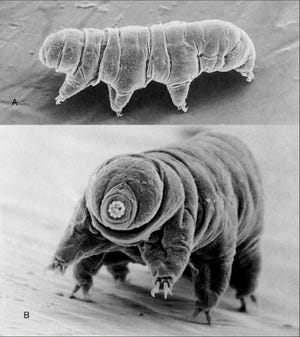Word from the Smokies: Park leads the world in science of ‘water bears’
Zoologist to share research at park speaker series

When Dr. Paul Bartels takes a walk in the woods, he sees a landscape absolutely teeming with bears. You’ll just need a microscope to see the ‘bears’ he has in mind.
“They occur in moss and lichen on trees and rocks,” said Bartels. “They’re also in soil, in leaf litter, and stream sediment and periphyton – the green stuff that forms on rocks and plants in most bodies of water.”
As an invertebrate zoologist and professor at Warren Wilson College, Bartels studies microscopic water bears, also known as tardigrades. Water bears are incredibly hardy and incredibly small animals with eight legs that can live just about anywhere, from the Arctic, to the equator, to the bottom of the sea. Some species are known for their remarkable ability to enter an extreme state called ‘cryptobiosis,’ in which most life processes are put on pause until environmental conditions improve.
Between 2000 and 2010, Bartels and his students at Warren Wilson College in Swannanoa completed one of the largest systematic inventories of tardigrades ever conducted as part of the All Taxa Biodiversity Inventory project in Great Smoky Mountains National Park. That inventory, orchestrated in coordination with park partner Discover Life in America (DLiA), revealed a practically unexplored world of microscopic life humming away just beneath the realm of the humanly visible.

“The Smokies are now one of the best-known locations anywhere on earth for tardigrade fauna,” said Bartels. “When we got started, there was only one published paper that had reported just three species. Now, we’re up to a total of 85 species.” Eleven of those species have been officially described as species new to science, and Bartels suspects that more than twice that will eventually be proven to be new species as new data is obtained.
Reposted from Citizen Times – https://www.citizen-times.com/story/news/local/2021/08/07/word-smokies-park-leads-world-science-water-bears/5505502001/